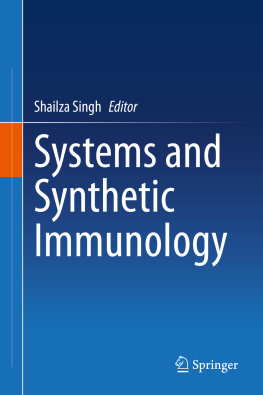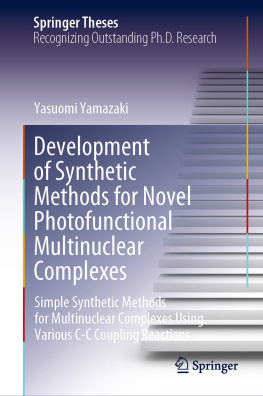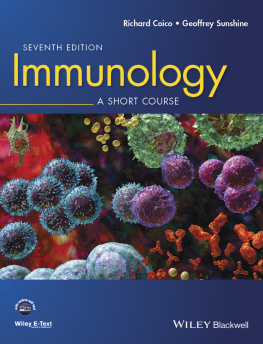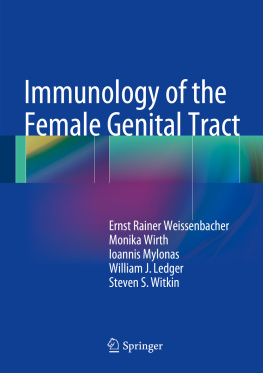Shailza Singh - Systems and Synthetic Immunology
Here you can read online Shailza Singh - Systems and Synthetic Immunology full text of the book (entire story) in english for free. Download pdf and epub, get meaning, cover and reviews about this ebook. year: 2020, publisher: Springer Singapore, genre: Home and family. Description of the work, (preface) as well as reviews are available. Best literature library LitArk.com created for fans of good reading and offers a wide selection of genres:
Romance novel
Science fiction
Adventure
Detective
Science
History
Home and family
Prose
Art
Politics
Computer
Non-fiction
Religion
Business
Children
Humor
Choose a favorite category and find really read worthwhile books. Enjoy immersion in the world of imagination, feel the emotions of the characters or learn something new for yourself, make an fascinating discovery.
- Book:Systems and Synthetic Immunology
- Author:
- Publisher:Springer Singapore
- Genre:
- Year:2020
- Rating:3 / 5
- Favourites:Add to favourites
- Your mark:
- 60
- 1
- 2
- 3
- 4
- 5
Systems and Synthetic Immunology: summary, description and annotation
We offer to read an annotation, description, summary or preface (depends on what the author of the book "Systems and Synthetic Immunology" wrote himself). If you haven't found the necessary information about the book — write in the comments, we will try to find it.
Systems and Synthetic Immunology — read online for free the complete book (whole text) full work
Below is the text of the book, divided by pages. System saving the place of the last page read, allows you to conveniently read the book "Systems and Synthetic Immunology" online for free, without having to search again every time where you left off. Put a bookmark, and you can go to the page where you finished reading at any time.
Font size:
Interval:
Bookmark:
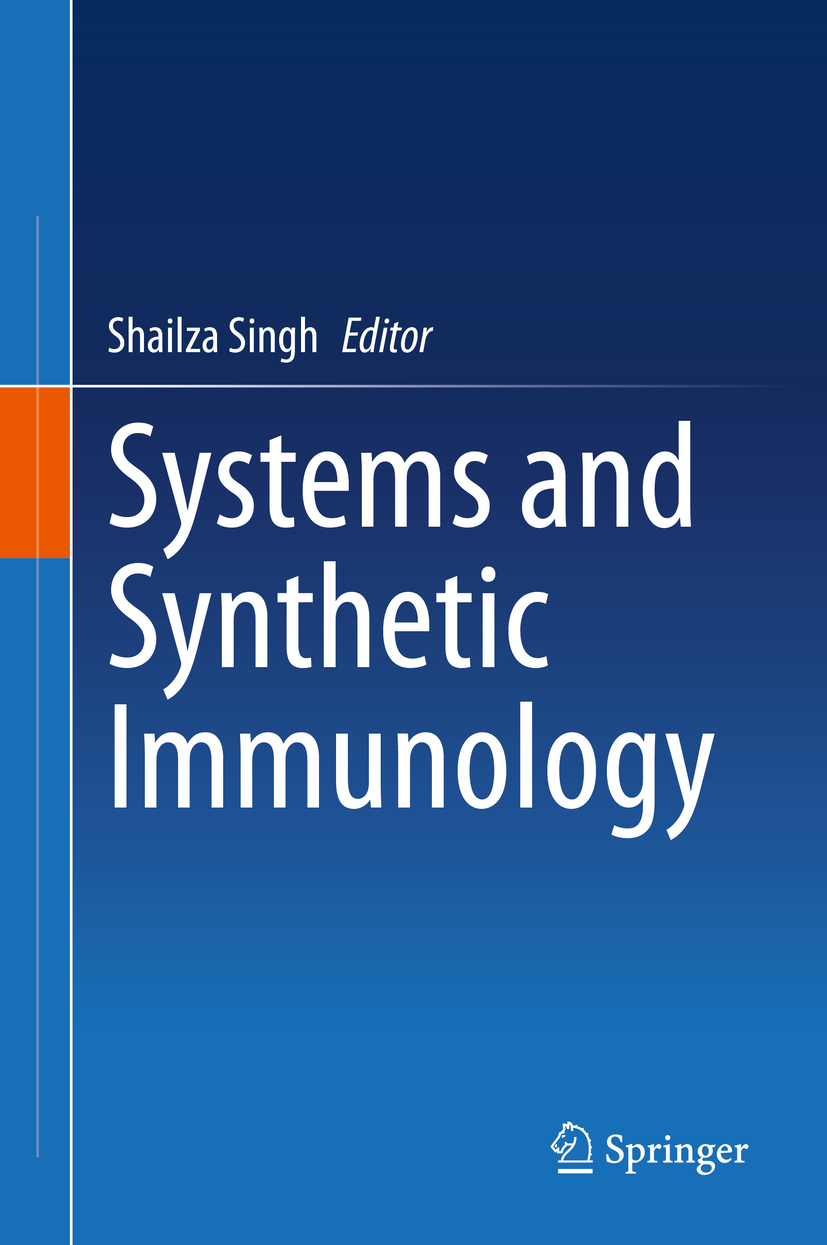

This Springer imprint is published by the registered company Springer Nature Singapore Pte Ltd.
The registered company address is: 152 Beach Road, #21-01/04 Gateway East, Singapore 189721, Singapore
is a scientist at the Bioinformatics and High Performance Computing Facility, NCCS, Pune, India. Her research chiefly focuses on the systems and synthetic biology of infectious diseases such as leishmaniasis. In this regard, her group is working to integrate the action of regulatory circuits, cross-talk between pathways, and non-linear kinetics of biochemical processes through mathematical modeling. Dr. Singh has been honored with the DBT RGYI, DST Young Scientist, and INSA Bilateral Exchange Programme awards and was selected by the DBT for a SAKURA EXCHANGE Programme in Science in the field of artificial intelligence and machine learning to Tokyo in 2018. She serves as a reviewer for prestigious international grants such as the RCUK; for national grants from the DBT, DST, and CSIR; and for several prominent international journals, e.g.,Parasite and Vectors, PLOS One, BMC Infectious Disease, BMC Research Notes, Oncotarget, and the International Journal of Cancer.
Leishmaniasis is a neglected tropical disease subverting the immune system of the infected individual. Most of available treatment regimens are associated with various drawbacks such as drug resistance, toxicity, and cost. Development and implementation of vaccines seem to be the only rationale to eradicate the disease. However, various traditional approaches for vaccine development have been implicated against leishmaniasis, but till date, no vaccine is available for humans in the market. It has been observed that vaccination strategy including live or attenuated vaccines is mainly due to their ability to deliver the antigens to the appropriate immune cells for generating an immune response. This indicates that pan-Leishmania vaccine packaged into a suitable delivery system could not only increase the stability of the vaccine candidate but also lead to its targeted delivery which will mimic the natural infection and recognition of the antigen by the desired antigen-presenting cells. Various natural and synthetic polymers have been used as delivery vehicles encapsulating the vaccine components against leishmaniasis. Herein, we have tried to summarize such attempts, along with our insight on using synthetic circuits as delivery system, not only for targeted but also controlling the expression dynamics of antigen as needed.
In the modern era, infectious diseases have become a major cause of health threat across the globe [], and in 2017, 20,792 out of 22,145 (94%) new cases reported to WHO occurred in seven countries: Brazil, Ethiopia, India, Kenya, Somalia, South Sudan, and Sudan. Tuberculosis accounts for death of nearly five thousand people every day. For both these diseases, there is need of global, multi-sectorial approach. Since drug resistance is a common problem associated with both the abovesaid diseases, vaccines appear as a safe and better treatment strategy.
Area of vaccine development holds much importance in todays arena of drug resistance and toxicity associated with drugs. Significant work has been done toward development of new vaccines and improves the efficacy of existing ones, and the global efforts toward vaccine development have improved the health status universally. It has been inferred that by improving the vaccination program, nearly 1.5 million lives could be saved annually []. Hindrances on various levels are responsible for this, which include legal and ethical reasons.
The major reasons are associated with the link between nature of pathogen and vaccination technologies evolved for it [].
In spite of enormous efforts and strategies followed to develop the vaccine, effective vaccines against both the abovesaid infectious diseases are still a distant variable. Herein this review, we would focus on various vaccination strategies of major infectious disease, namely, leishmaniasis, along with the loopholes in vaccine development program. The important discussion in the present study would be on use of biomaterials in improving the vaccination and other immunotherapies. Biomaterials hold importance in vaccine development because they allow controlled responses to antigens, adjuvants, or immunomodulators and have also been explored for targeted delivery of vaccine candidates to specific cell/tissue.
Leishmaniasis is a neglected tropical vector-borne disease which is transmitted by bite of infected sand fly, afflicting nearly 900,000 1.3 million people annually with 30,000 deaths per year []. The disease is spreading by natural phenomenon and the man-made condition for which efforts are being taken using technology, knowledge, and communication to effectively control it.
Font size:
Interval:
Bookmark:
Similar books «Systems and Synthetic Immunology»
Look at similar books to Systems and Synthetic Immunology. We have selected literature similar in name and meaning in the hope of providing readers with more options to find new, interesting, not yet read works.
Discussion, reviews of the book Systems and Synthetic Immunology and just readers' own opinions. Leave your comments, write what you think about the work, its meaning or the main characters. Specify what exactly you liked and what you didn't like, and why you think so.

